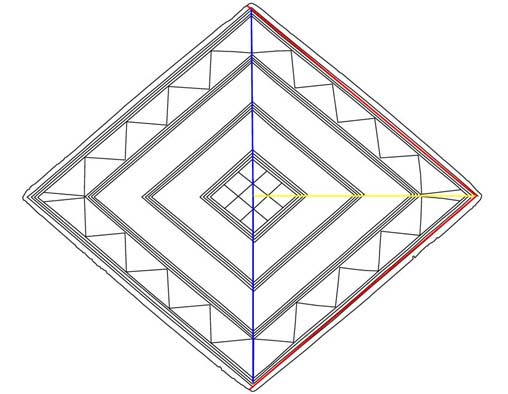
THE KHAFRE PYRAMID LUNAR CODES & THE 3,4,5 TRIANGLE.
This is, without doubt, one of the more significant aspects of the lozenge's
overall coding, as the cycle of the moon from lunar major standstill to lunar
major standstill was of extreme importance to the calendar and the consequent
regulating of regional society.
The Khafre Pyramid was Egypt's "pyramid of the Moon" and it's measurements
were dedicated to the cycle of the moon in terms of lunar months, lunar years
and full major standstill cycles (nutation cycle).
The right hand side of the lozenge (as depicted) is dedicated to the moon and carries ratio-down expressions of the Khafre Pyramid accordingly. Let's consider these:

Figure 24: The Khafre Pyramid was built exactly to principles of the 3,4,5
triangle, with each aspect relating to the lunar cycle. Half its base length
was 354.375 feet (adjacent). The lunar year is 354.375-days. The vertical height
of Khafre was 472.5 feet (opposite). The diagonal length from base to apex was
590.625 feet (hypotenuse). Half of 590.625 is 295.3125 and there are 29.53125-days
in a lunar month.
The Bush Barrow Lozenge was very carefully built to positively demonstrate the
3,4,5 attributes of Khafre Pyramid.
Let's now consider how lunar months were working as increments within the lozenge.
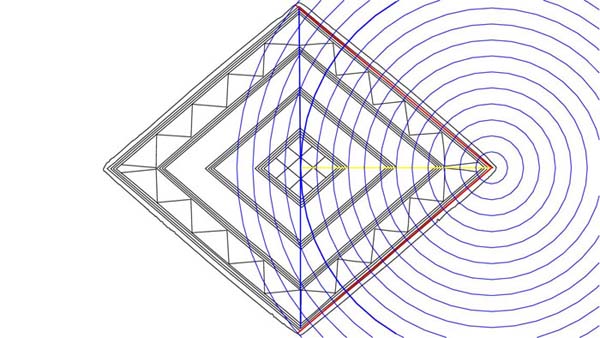
Figure 25: each circle shown increases at the rate of .2953125 inches. This
is in recognition of the 29.53125-days per lunar month. Twelve expansions extend
to the centre of the lozenge and represent 354.375-days. However, to extend
the circles to the top and bottom points of the lozenge requires 16 circles
(representing 16 lunar months) or 472.5-days.
On the lozenge the fabricators seemed to pick every 3rd month in a series of
12-months to hit upon a significant point of the internal diamonds or centre.
Thereafter, excellent hits occur vertically with the 13th, 14th and 16th months,
with the 15th month relating closely to a significant station as well.
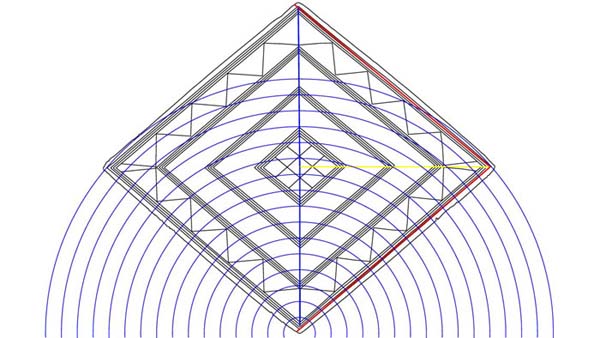
Figure 26: Again, the layout of 16 lunar months seems to work empirically
from the bottom edge of the lozenge with the 16th month circuit resolving perfectly
to the pattern points to the left and right. This preoccupation of calibrating
the lunar month count into either 12 or 16 periods is consistent with the layout
of the Calendar of Coligny (see article in this website) where there were 12
lunar months, set out amidst, what would amount to, 64- squares (16 X 4). This
was but one way of reading the Calendar of Coligny,
wherein the 64 lunar months of 29.53125-days duration each equated to 1890-days.
The sum of 3.6 batches of 1890-days = 6804-days, which is the duration of the
lunar nutation cycle (major standstill to major standstill).
THE LENGTH OF THE LOZENGE, THE SOLAR YEAR & THE SABBATICAL CALENDAR.
Officially, the lozenge achieves a length of 185mm from edge to edge. This equates to 7.2835 inches, the half value of which is 3.64175 inches. Although measurements supplied by the Devizes Museum are rounded to the nearest millimetre, it's likely the length value was meant to achieve 7.29 inches overall (185.166mm). This seems likely, as the left side of the lozenge appears to code a 365.25-day period (true year), whereas the right side appears to show either a 364-day period (Sabbatical Calendar single year, day count), a 354.375 day count (lunar year) or a code related to the length of the Menkaure Pyramid (as 3.564 inches...356.4 feet actual). Marked stations within the pattern points or at the extremity tips of the lozenge indicate these coded attributes.
The entire diameter, in inches, is read as a string of accumulative codes in any of the following, perfect combinations of significant ancient numbers and useful ratio values:
Here's what the left side looks like.
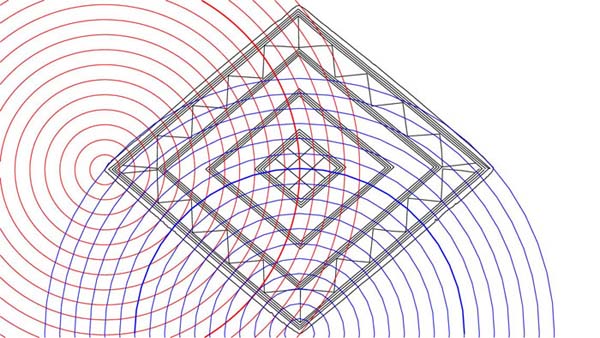
Figure 27: Under the age-old Sabbatical Calendar system, used from the eastern
base of the Mediterranean to Britain, there were 13 months per solar year of
28 days duration each (364-days). This kind of day count was for convenience
only and it was left to run for 7 solar years until the end of the Sabbatical
Year before correction. The ancient astronomer/ priests fully understood that
the year was 365.25-days and had also refined that figure to 365.2420-days.
On the Bush Barrow Lozenge the solar year is encoded as 13 months of 28.1 days
duration (left side) and thereby achieving (365.3-days). This was obviously
done for visual convenience, as an increment of 3.653 inches, running from the
left tip of the lozenge to the centre, could be visually detected and divided
by 13. This would also have been interpreted to mean 28 X 13 or 364-days. The
full length of each base side is visually 4.777 inches, or .281 inches X 17.
The Druids and their forebears also viewed the solar month in periods of 30-days
when doing calculations alongside the lunar month of 29.53125-days. This is
clearly in evidence upon the lunisolar Calendar of Coligny, where 63
month counts (including the CIALLOS regions of 45-days each…multiplied
by 30 (solar month) = 1890-days. Alternatively, 29.53125-days (lunar month X
64 (the CIALLOS regions of the Calendar of Coligny occupy the equivalent
space of 4 normal lunar months) = 1890-days. As has been mentioned, 1890-days
X 3.6 = 6804-days…the duration of the lunar nutation cycle.
The Great Pyramid was 189 feet X 4 per side or 189 X 16 for a full perimeter.
The Khafre pyramid was 189 feet X 15 for a full perimeter. It was also 34020
inches in perimeter, which is half of 68040.
The Bush Barrow Lozenge preceded the Calendar of Coligny by a millennium or two, but has the same system of calendar counting encrypted into it, using the same Sumerian/ Babylonian/ Egyptian/ British measurement system.
It must be pointed out that the literal length of the Bush Barrow Lozenge was, undoubtedly, supposed to achieve, overall, 7.29 inches (185.166 millimetres), which it does with excellent relative precision. This measurement is 1/2 of 14.58 inches, which was the length of a Greek "Pygon" and a strong lunar code based upon one of the Greek feet @ 12.15-inches (1.2 such feet = 14.58 inches). The Greek measurements had earlier come from Egypt, as had the British ones. To show the importance of 7.29 inches, one has only to consider that there are 3.5 batches of 729 days in the 2551.5-days of 7.2 lunar years. The 2551.5-day count for the moon was a part of the Sabbatical lunisolar calendar system that tracked 7.2 lunar years concurrently with 7 solar years (2556.75-days). The difference in the two periods (5.25-days) was the reason the late era Druids held an auspicious mistletoe culling ceremony on the 6th days after the Winter Solstice. This meant that their calendar count would end on the same day, either 7 solar years or 7.2 lunar years later.
The length of the Bush Barrow Lozenge (7.29-inches) is 1.6875 greater than the width (4.32 inches) of the Clandon Barrow Lozenge The length of the Clandon lozenge was, undoubtedly, intended to convey 6.18034 inches. The Clandon Barrow Lozenge (in the collection of the Dorset County Museum, England) was, seemingly, fashioned to be the product of 10 inches ÷ PHI (1.6180339) = 6.18034 inches. This length value was, undoubtedly, the same as the width value of the Bush Barrow Lozenge. Both lozenges, thereby, could have been used in ancient Wessex marketplaces, to check the integrity of circular "bushel tubs" and ascertain that the public weren't receiving "short measures".
NAVIGATION.
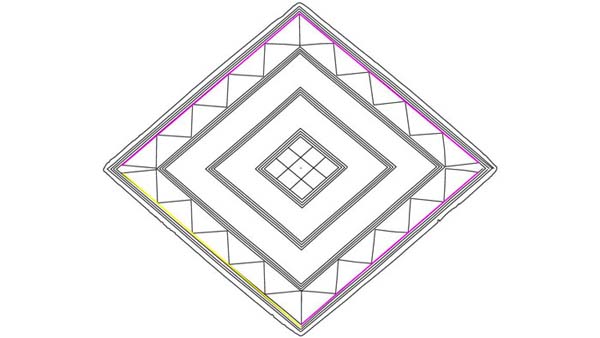
Figure 28: A series of chevron patterns zigzag their way around the Bush
Barrow Lozenge perimeter. There are "cone" shapes at the ends of each
set, which designate the lengths of each. All in all there are 36 compartments
formed by the chevrons (alluding to 360-degrees or 90-degrees per quarter of
the Earth).
The outer set of compartments per quarter is 5 and they have a coded length
of 4.32 inches.
The Sun is 864000 miles in diameter (432000 X 2). The way to find the circumference
of the Earth under the ancient systems was to take the perimeter value of the
Great Pyramid and multiply it by 43200. Therefore the Earth was 130680000 feet
in circumference under the "11" series navigational system (3025 X
43200) or 130636800 feet under the "6" system (3024 X 43200).
The degree angle of the magenta line to the upper right is 129.6. This is in
homage to 12960-years, which is half the duration of Precession. The angle of
the magenta line to the upper left is 229.6, which is 129.6 plus 100-degrees.
The magenta line to the bottom right is virtually 129.6-degrees but strays marginally
from that angle.
What is being inferred by the 4 chevrons is an all 'round length of 17.28 inches.
In ancient navigation an important linear measurement was 550 feet (100 fathoms).
If this straight line distance was converted to a circumference. Then the circuit
attained was 1728 feet or 4.8 feet per degree of arc. The totality of the "11"
series increments were used in this way for converting "11" series
linear distances travelled to circuits wherein precise degree angles could be
read. This allowed for precise plotting of a ships course beyond sight of land.
The yellow line is of extreme importance.
It is very obvious that something has been adjusted in the symmetry of the lozenge
in this quarter to convey an important code. The 4.32 inch line falls marginally
short of its objective, but a line of 4.3560 inches,
running from the 2nd inward pattern point on an angle of 130.68-degrees resolves
very well onto the cone end that marks the termination of that quarter of chevron.
The British Standard acre was 43560 square feet (1
furlong X 1 chain…660 X 66). If the 43560 square feet of the British Standard
acre were likened unto "carpet tiles" and laid out in a straight line
spanning 43560 feet, then 3000 such segments would circumnavigate the Earth
under the "11" series reading of 130680000 feet…that's why the
yellow line sits on an angle of 130.68-degrees.
Whereas the external line of the chevrons appears to code 4.32 inches or .864
of an inch per segment, the inner line, composed of 4 segments must, of necessity,
code 3.456 inches. The Sarsen Circle at Stonehenge had an outer rim circumference
that was intended to code 345.6 feet or 11.52 inches per degree of arc. This
circumference of the Sarsen Circle was also 1/378000th of the "Ring of
the Earth under the "6" series navigational system. The full width
of Stonehenge (east-west) was 378 feet (or ½ the length of the Great
Pyramid).
The inner and outer average inferred by the chevron dimensions is 4.32 + 3.456
= 7.776 ÷ 2 = 3.888 inches. This value was very strongly represented
at the Octagon of Newark, Ohio where one embankment lies on an azimuth angle
of 38.88-degrees (12.96 X 3). The sum total of 4 sides of the lozenge X 3.888
inches = 15.552 inches. At the Octagon the distance between centres of the circular
and octagonal component parts of the site was 1555.2 feet or 259.2 feet (precession)
X 6.
This somewhat involved example shows how deeply we must ultimately look into
the lozenge coding to extract the international parcel of astronomical numbers
residing therein…numbers used from Egypt to New Zealand in antiquity.
THE STONEHENGE PHI CIRCLE CODES.
There are a series of circles at Stonehenge that are in a direct PHI relationship
with each other. The PHI diminishing circles start out on the Avenue where marked
positions indicate a diameter that is a PHI increase of the Aubrey Circle. The
Stonehenge PHI circles are 466 feet, reducing by PHI to 288 feet
(Aubrey Circle), reducing by PHI to 178 feet ("Y" Holes), reducing
by PHI to 110 feet (Sarsen Circle outer rim), etc. The "Z"
Holes Circle (132 feet diameter) is a non PHI customised circle, which codes
a navigational diameter of the "11" series.
Let's see what these PHI reducing circles look like at Stonehenge then see how
they are coded into the Bush Barrow Lozenge.
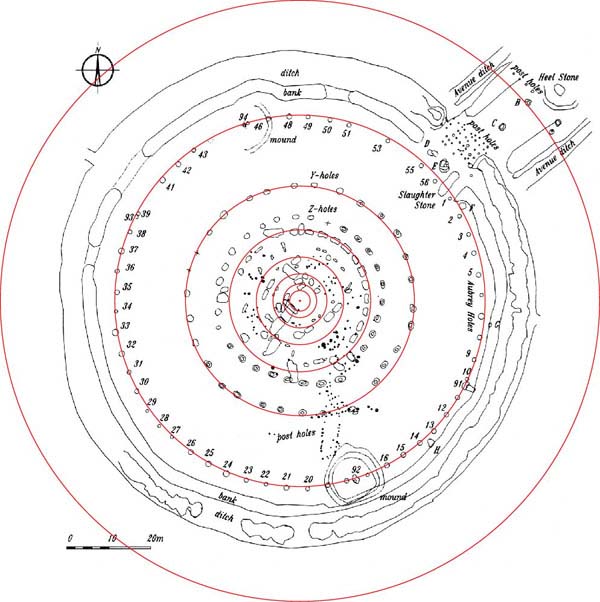
Figure 29: Circles reducing by PHI at Stonehenge. Their diameters are 466,
288, 178, 110, 68, 42, 25.97, 16 feet, etc., respectively.
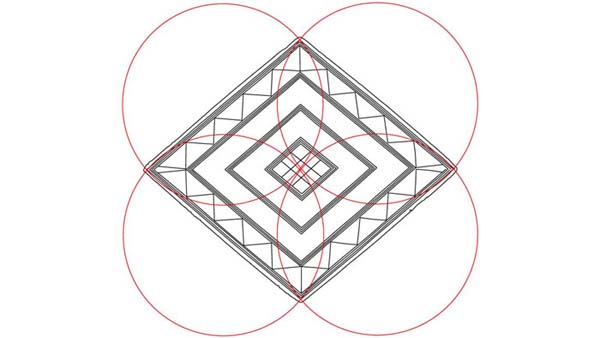
Figure 30: The longest outer pattern lines were intended to convey 4.66 inches and this is a common number found from Egypt to Britain. It seems to indicate 18.64 (4.66 X 4) and relate to the lunar nutation cycle of 18.613 solar years. It is found encoded upon the Calendar of Coligny, as well as some sexagesimal Egyptian Royal Cubit rods. A PHI increase of the Aubrey Circle at Stonehenge (288 feet) produces a marked circle of 466 feet.
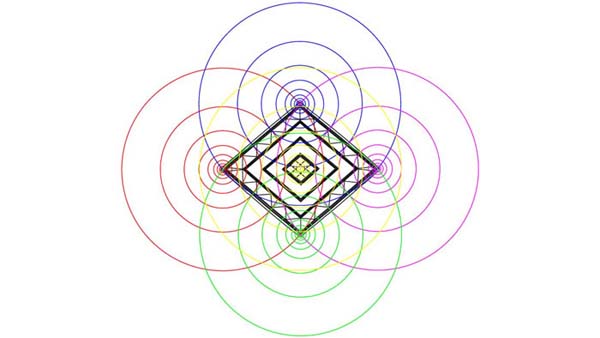
Figure 31: The Stonehenge PHI circles swirling out from the 4 end points
of the pattern lines, as well as from the centre of the lozenge. Let's get in
closer to see the effect.
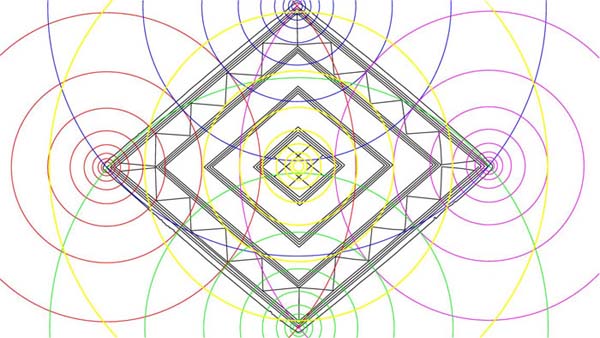
Figure 32: The overall symmetry between the outer pattern line points and the centre of the lozenge is sufficiently precise to allow the coded PHI circles of the Stonehenge monument to meld together with precision. Stations all over the lozenge would have been used by the astronomer/ priest, reading the lozenge, for mnemonic reference to the PHI sequence of Stonehenge.
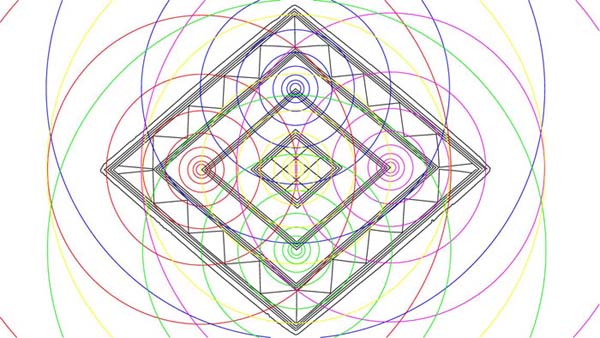
Figure 33: The selfsame Stonehenge PHI circle reduction, but this time centred on the outer points of the 3rd inward diamond, as well as the centre. Again, excellent relationships are seen to occur at stations all over the lozenge. This was sufficient to retain in memory the PHI circle breakdown at Stonehenge and if a principle was ever forgotten it could be recalled by reference to the lozenge mnemonic device. It's probable that the wooden backing of the lozenge had a precisely calibrated ruler etched into its surface. By use of a set of callipers across the face of the lozenge between stations, readings could be translated into measurements. The priest /astronomer/ teachers could use such devices to hone their skills by frequent revision of the encoded mathematical principles.
THE 51.84-DEGREES & 25920 YEARS CODES.
The side angle of the Great Pyramid was intended to code 51.84-degrees. The
Great Pyramid covers a base area of 5184 square reeds. Herodotus, the father
of profane history, said that the Great Pyramid was 8-Egyptian acres per side.
Inasmuch as each face equates to 230400 square feet (11520 X 2), we now know
that an Egyptian acre was 28800 square feet. Therefore, there are 32 Egyptian
acres in the 4 faces and 19.845 in the base area…or 51.845 overall. The
5184 coding was used in navigation and a circle based upon a diameter of 1 league
(16500 feet) travelled was 51840 feet in circumference …breaking down to
144 feet per degree of arc. The Menkaure Pyramid's combined Egyptian acreage
(4 faces and base) is 11.52 exactly under its PHI dimensional assignment.
The number 51.84 is 1/500th of 25920…the number of years in the Precession of the Equinoxes. The Heel Stone at Stonehenge has its outer face sitting 259.2 feet out from the centre of Stonehenge. The distance up the side of Silbury Hill was intended to code 259.2 feet. It is obligatory that both 51.84 & 25920 be represented upon the Bush Barrow Lozenge.
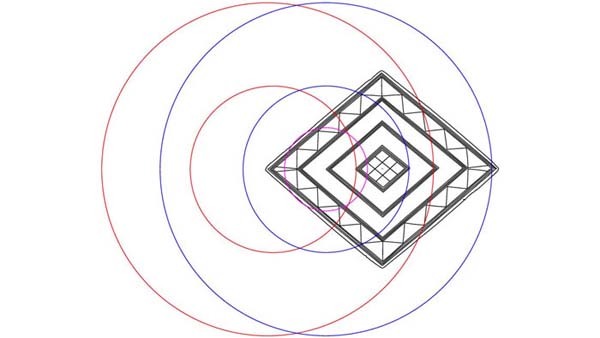
Figure 34: A series of circles based upon either 51.84 or 2.592 swirling
out from stations and relating well with other stations. Let's go in closer.
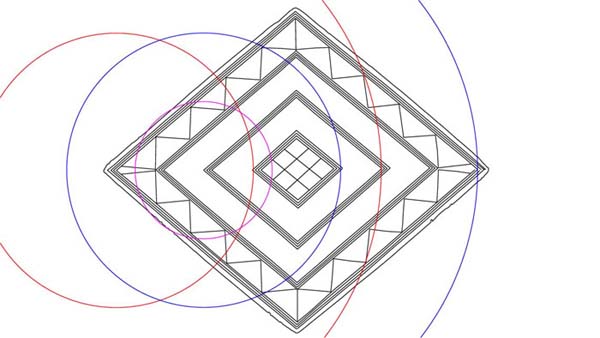
Figure 35: Stations to the left side of the lozenge provide excellent reference to codes in either 5.184 inches or 2.592 inches. The stations are the outer diamond's inner point and the outer point of the 3rd inward diamond, which provides 3 readings.
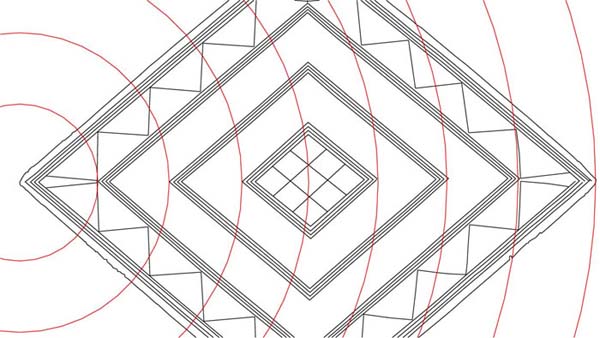
Figure 36: A series of codes extending from the left exterior edge of the
lozenge, giving a sampling of intended codes. Marginal drift sometimes occurs,
but generally it is in the range of about .01 of an inch and is virtually undetectable.
Here are the apparent codes, as well as reasons as to why they were important
under the ancient system of astronomical mathematics:
This assessment touches upon some of the coding contained within The Bush Barrow Lozenge, but does not attempt a complete analysis. It must be realised that there are 4 sets of concentric diamonds, each with 4 sides and 4 lines per side (64). Each line lies on a particular angle and sits a coded distance from stations across the length and breadth of the lozenge. There is still a considerable amount of coding to extract and identify, but this should suffice to demonstrate to the reader that the Bush Barrow Lozenge is a carefully fabricated, code bearing, memory device.
The Clandon Barrow Lozenge (Dorset County Museum), which appears to have been fashioned by the same artisan who fabricated the Bush Barrow Lozenge, also needs to be studied in depth to interpret its inbuilt, coded length and angle, geometric attributes.
REFORGING OUR LINKS TO A FORGOTTEN PAST.
Many people are now looking far into the past in an attempt to find meaning
in the present. They are attempting to re-establish links to their pagan forbears
and bring about a renaissance of that which was ruthlessly supplanted by the
domination of the Romans and their latter era state-run Church.
So thorough was the propaganda, slander and eradication programme of the Church,
that it is now difficult to piece together the few remaining vestiges of truth
preserved from pre-Christian times or understand what we once had and how
it was ultimately wrestled from our grasp.
The Roman Christian movement needed to consolidate its power base and have absolute authority residing with its patriarchy. Anything that resisted this incentive had to be defamed, destroyed or absorbed. Some estimates state that as many as 6 million women might have lost their lives due to the Church instigated witch-hunts that endured for centuries.
In truth, the traditional "witch" depicted in children's stories
or represented as the epitome of evil by the Church, is very much a Christian
invention. Witches and warlocks are said to empower themselves, or conjure
up devils, by use of geometric patterns like the dreaded hexagram (the six
pointed star)…hence the hex placed upon unfortunate individuals who have
raised the ire of the witch.
For years, up until recent times, the Church was influential in banning any
geometry from schoolbooks where there were crossing lines and star patterns.
Geometric studies were limited to simple circles, ellipses, squares, rectangles
and triangles.
This is a hangover from the days when the Church fathers were stopping people
from "going to the stones"…the standing stone circle sites, which
were centres of learning and deep science, set out sometimes in star pattern
arrays of stones. In Scotland, to this very day, people announcing that they
are heading off to church will use the terminology, 'going to the stones.'
Anciently, the 5-pointed stars were used for tracking the 8-year cycle of the planet Venus. The six pointed stars were used for orientation onto the summer and winter solstice rise and set positions of the sun (at higher latitudes the positions of ray points were modified), with 2 ray points of the star fixing onto north and south. The seven and fourteen pointed stars were used for accurate calendar counts. The eight pointed stars were used for determining the primary and secondary points of the compass (including the equinox rise and set points). The twelve pointed stars were used to sight onto the positions of 12 houses of the zodiac, etc.
The "round the cauldron boil and bubble" representation of
ugly old hags mixing-up their evil brews of obnoxious ingredients, was the Church
patriarchy's way of deriding influential women leaders…women who were physicians,
sensitives and counsellors within the community infrastructure. These nurses,
midwives, and general caregivers made up their own herbal remedies or cure-alls,
using the bounty of forest and field…for injuries, bruises or sicknesses.
They were dedicated to the well-being of people in their care and their role
was one of service. These adept matriarchs could mend anything from a broken
leg to a broken heart and oftimes wielded far too much influence to be tolerated
by the Church patriarchy.
Unfortunately, most modern concepts of witchcraft have a direct pedigree back
to the propaganda machinery of the Church. Such concepts never existed prior
to Roman Christianity and those who, nowadays zealously act within "dark"
capacities of witchcraft are, more often than not, simply role-playing according
to a defamatory script originally concocted by the early Church.
The "white witch" movements of Britain seem to have been able to preserve
some of the nature worship concepts from pre-Christian times and appear to have
held onto vestiges of the ancient truth…as have groups like the Masons.
The fun loving, sheep herding, flute paying and generally mischievous little
god of the common people of Southern England, Puck (also known as Robin
Goodfellow), got transformed by the Church into the westernised Christian
devil. The title Wicca degenerated to "wicked" in "church-speak".
The Culdee (Celtic Christian) community, the Damnini, who resided at
Devenish (amongst several other locations and strongholds throughout
Britain) were, for centuries, hounded and abused by their Romanised counterparts.
Over time, "church-speak" described those not within the Roman Christian
fold as the "damned", in league with the "devil"and
thereby "devilish". Following the arrival of St. Augustine
religious tolerance between groups declined rapidly. Augustine's prescribed
mission had been to Christianise Britain, although Culdee Christianity had persisted
there for about 550 years and had coexisted harmoniously with other religions
since about 43 AD (see Celt, Druid & Culdee, by Isabel Hill Elder).
The festivals that had for so long brought cohesion to regional societies were
either banned, rendered meaningless or absorbed as holy days dedicated to a
Church designated, venerated saint.
Fear, where there had been no fear, superstition where there had been no superstition,
accusations of evil, where there had been no evil and the loss of milleniums
of accrued knowledge…these were the gifts and fruits proffered by Augustine
and his successors in Britain. Roman Christian churches were built over the
tops of the standing stone circle sites and every attempt was made to utterly
eradicate all traces of the astronomical sciences. The dark ages had arrived
with a vengeance…
Thankfully, a reasonable number of standing stone circles yet remain, as do artefacts like England's Bush Barrow Lozenge or France's Calendar of Coligny…and the profound, encoded knowledge of our forebears' reposes within them.
Ancient astronomer priests, or "Masters of the Craft" were highly enlightened scientists and used their understanding of astronomical mathematics to bless the societies they served. These individuals lived in tremendous harmony with their surroundings, by knowing the rhythms, movements and cycles of nature. Theirs was a philosophy of abundance for all, based upon constantly monitoring daily circumstances of life in the present and anticipating or preplanning for events in the future. This they could do by having a sound knowledge of how nature predictably worked in conjunction with the cycles of the Sun & Moon.
For those in the present who wish to return to their true roots and forge strong
links with the pre-Christian past, it is first necessary to understand the common,
universally dispersed principles that guided many ancient societies.
To the great chagrin of many…one has to first learn the mathematical principles
if one is to even begin to understand the guiding philosophy of the ancestors.
This is an inescapable necessity, as the mathematical principles preceded the
religious/ philosophical concepts. The nature worship religions of the ancients
are founded on astronomical, cyclic mathematics.
No amount of communion with nature, evoking the names of half forgotten pagan
deities, watching the solstice sunrise at Stonehenge or being mesmerised by
the captivating strains of Celtic music are capable of providing a substitute
or escape route… mathematics holds the sole key to gaining an understanding…you
have to learn the maths!

December 2001. ©